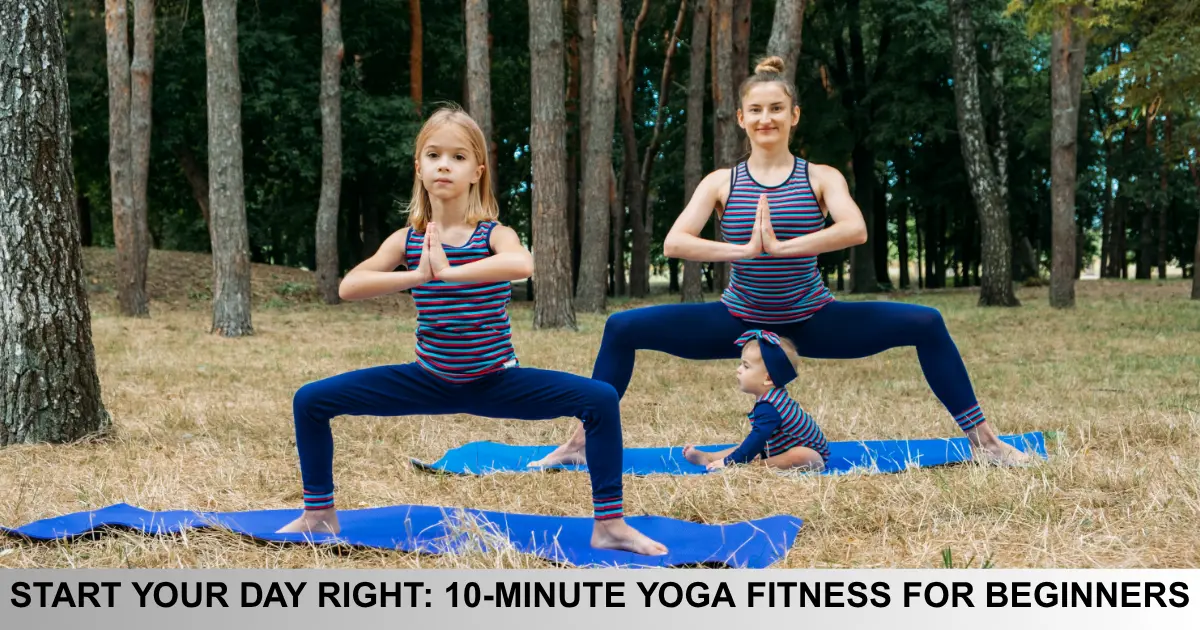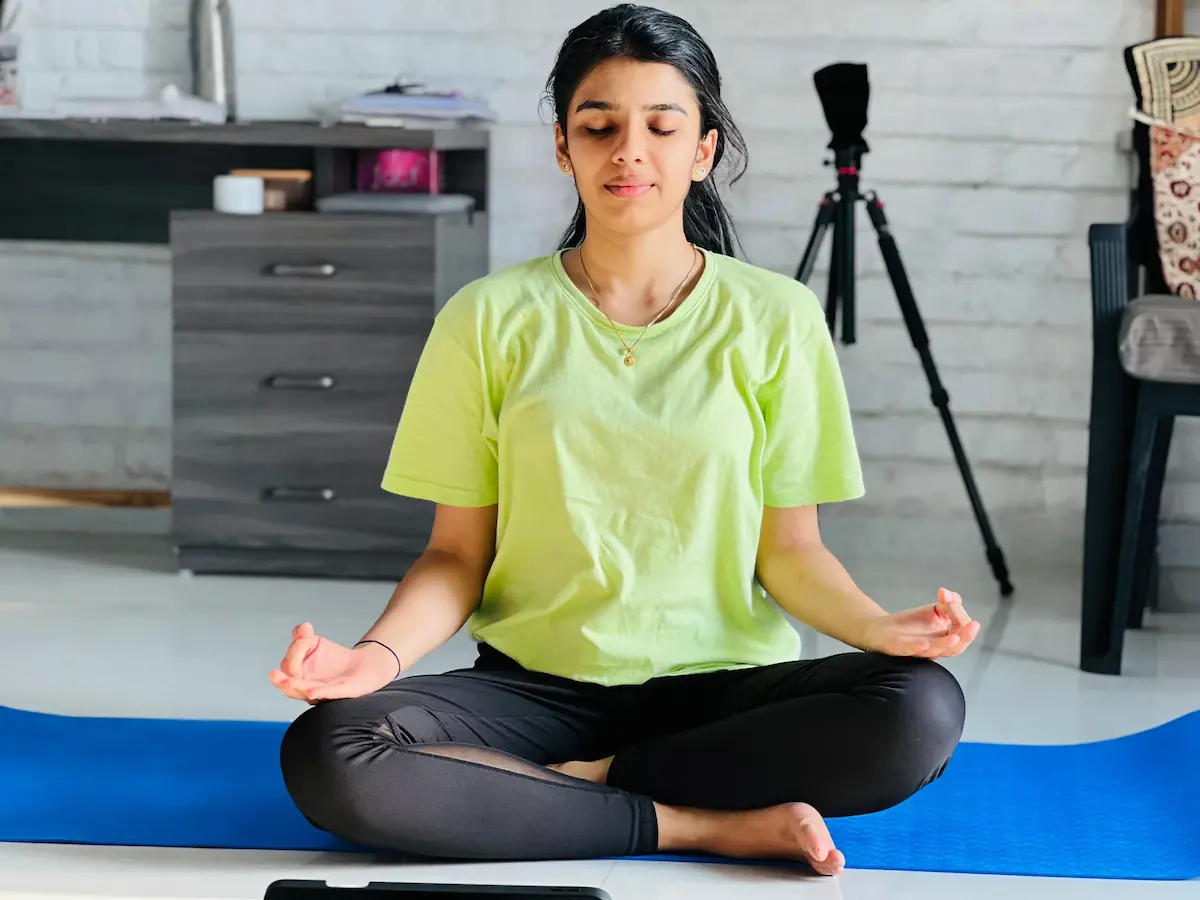Yoga gently opens the door to strength, flexibility, and mindfulness a practice both for body and mind. If you’re new and looking for a manageable, effective routine, this 10-minute daily yoga plan will help you unlock energy and well-being right at home.
Why Start Yoga as a Beginner?
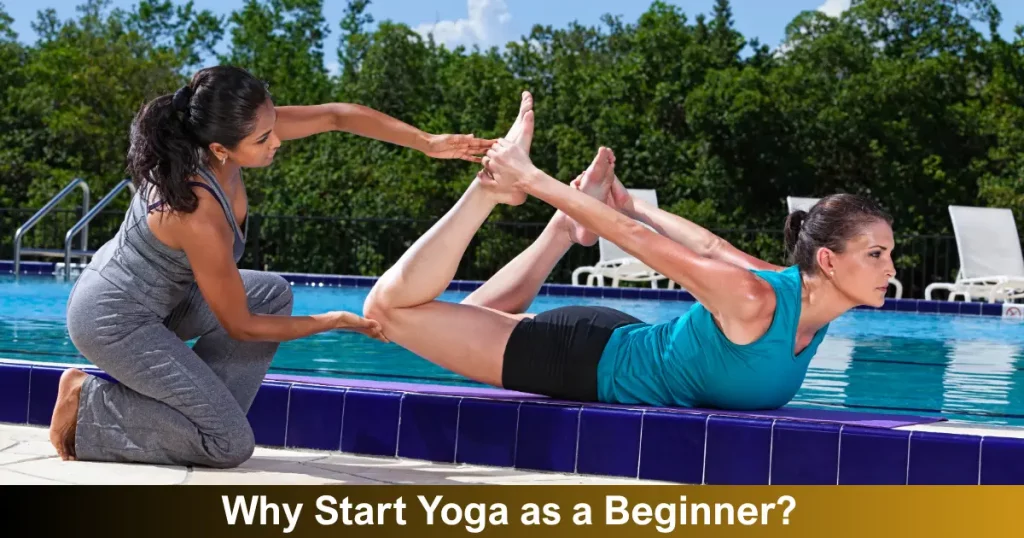
Yoga is much more than exercise it’s a journey toward self-discovery, stress relief, and better health. For beginners, a simple routine helps build the foundation improving flexibility, circulation, and mental clarity. Consistency is key: a short daily practice will gradually lead to real transformations.
10-Minute Daily Yoga Sequence for Beginners
Below are 15 easy yoga moves, each with step-by-step instructions, key benefits, and beginner tips:
1. Finger Stretching
- How to Do It: Flex your fingers into a gentle fist, then spread them wide. Release.
- Reps: 8 times.
- Benefits: Improves finger flexibility and warms up hand joints.
- Tip: Keep movements smooth; avoid forcing a stretch.
2. Palm Stretching
- How to Do It: Extend your arms forward, palms facing down. Move palms up and down.
- Reps: 8 times.
- Benefits: Prepares wrists and palms for more complex poses, relieves typing fatigue.
- Tip: Don’t overstretch if you have wrist issues.
3. Hand Stretching
- How to Do It: Hold hands in front of you, palms facing each other. Move hands apart and back together.
- Reps: 8 times.
- Benefits: Increases wrist mobility and releases hand tension.
- Precaution: Stop if you feel wrist pain.
4. Elbow Stretching
- How to Do It: Flex elbows, rotate in big circles clockwise 10 times, then anticlockwise.
- Benefits: Lubricates elbow joints and prevents stiffness.
- Tip: Move slowly to avoid over-rotation.
5. Shoulder Stretching
- How to Do It: Place hands on shoulders, rotate elbows in big circles, clockwise 10 times, then anticlockwise.
- Benefits: Eases shoulder tension, aids posture.
- Precaution: Avoid fast or jerky movements, especially if recovering from a shoulder injury.
6. Body Warm-Up
- How to Do It: Stand with legs apart, arms out to sides, parallel to floor. Gently lift arms up and lower down.
- Reps: 10 times.
- Benefits: Warms up the full body for deeper poses, boosts circulation.
- Tip: Breath in when lifting, out when lowering arms.
7. Neck Stretching
- How to Do It:
- Turn head left to right 10 times.
- Move up and down 10 times.
- Rotate in a gentle circle clockwise and then anticlockwise 10 times.
- Benefits: Relieves neck stiffness, improves mobility.
- Precaution: Move slowly; don’t roll the head too far back.
8. Twisting
- How to Do It: With arms stretched out to the sides, gently twist your upper body from left to right.
- Reps: 10 times.
- Benefits: Stimulates spine, massages abdominal organs, aids digestion.
- Tip: Keep hips facing forward; twist only your upper body.
9. Parsva Urdhva Hastasana (Side Upward Stretch)
- How to Do It: Raise your right arm above the head, bend to the left; hold briefly. Repeat on the other side.
- Reps: 10 times each side.
- Benefits: Stretches side body, enhances lung capacity.
- Precaution: Do not lean forward or backward; focus on a side stretch.
10. Chest Expansion
- How to Do It: Interlace fingers behind back, gently push hands back and open chest wide.
- Reps: 10 times.
- Benefits: Opens chest, improves posture, counteracts slouching.
- Tip: Keep shoulders relaxed.
11. Pada Hastasana (Standing Forward Fold)
- How to Do It: Stand tall, then bend forward from hips, keeping knees straight, touch palms to floor if possible, then rise.
- Reps: 10 times.
- Benefits: Stretches hamstrings, improves spine flexibility.
- Precaution: Bend knees if hamstrings are tight.
12. Leg Stretch
- How to Do It: While holding onto a chair or wall for balance, lift one leg forward and back, then switch.
- Reps: 10 times per leg.
- Benefits: Gently warms up hips and legs, increases flexibility.
- Precaution: Hold onto support to avoid loss of balance.
13. Knee Exercise
- How to Do It: Holding onto a support, lift one leg and flex and extend the knee, then switch.
- Reps: 10 times per leg.
- Benefits: Lubricates knee joints, preps for standing poses.
- Tip: Move gently to avoid knee strain.
14. Tadasana (Mountain Pose with Heel Lift)
- How to Do It: Stand tall, gaze ahead, rise up onto toes, then lower heels down.
- Reps: 10 times.
- Benefits: Improves posture and balance, strengthens legs.
- Tip: Engage core and keep shoulders relaxed.
15. Foot Stretch
- How to Do It: Place one heel on the mat, flex toes back and forth, then switch legs.
- Reps: 10 times per foot.
- Benefits: Improves ankle mobility, relieves foot fatigue.
- Tip: Go gently if you have plantar fasciitis.
Key Benefits of This Routine
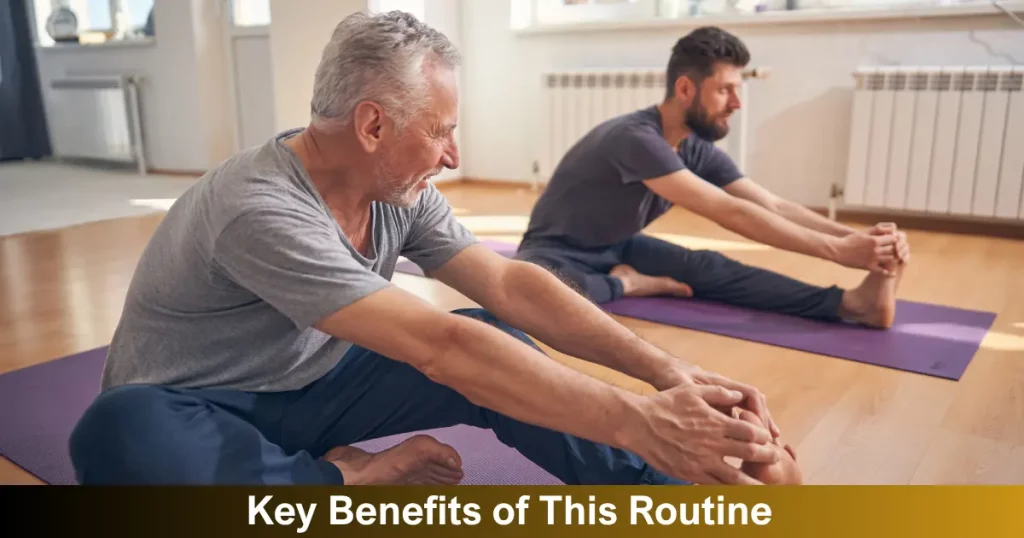
- Boosts flexibility and mobility, especially in commonly stiff areas (shoulders, knees, neck)
- Improves blood flow and overall energy
- Builds a sustainable, healthy daily habit
- Gentle enough for adults and senior citizens to practice at home
- Gradually prepares you for advanced yoga, if you choose to progress
Tips & Precautions for Beginners
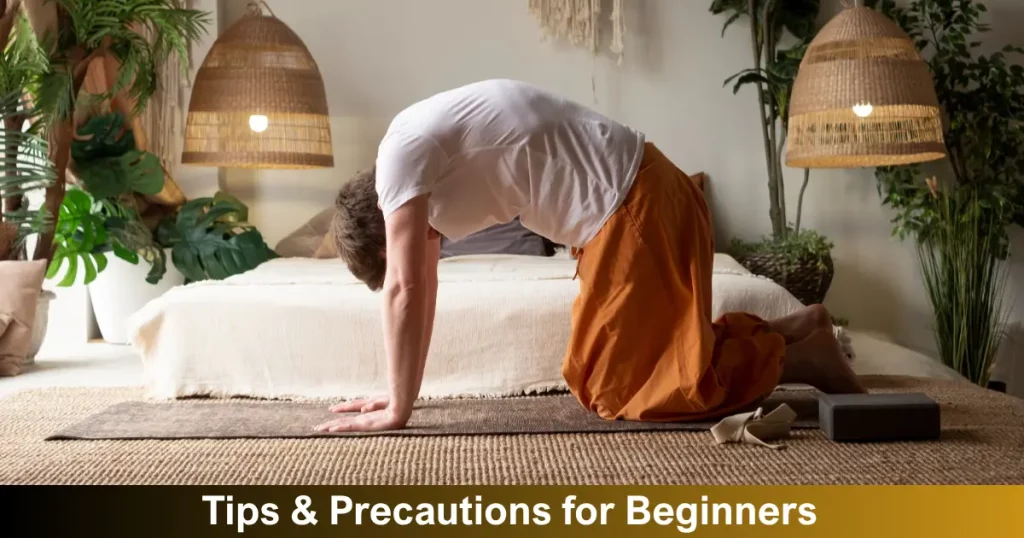
- Practice on a light stomach; ideally, wait 2–3 hours after a big meal.
- Use a non-slip yoga mat and wear comfortable clothing.
- Move gently, never forcing a stretch; pain is a signal to stop.
- Avoid yoga if you are unwell, have a fever, injury, or right after surgery.
- If you have medical conditions or are pregnant, consult your doctor before starting.
- Don’t combine yoga with strenuous exercise.
- Practice in a clean, well-ventilated space.
- Consistency is more important than intensity.
- Beginners benefit greatly from learning under a certified yoga instructor, either in person or via trusted online videos.
Frequently Asked Questions (FAQs)
Q1: How do I start yoga at home with no experience?
A1: Begin with short, simple routines like this 10-minute sequence. Use online resources, follow detailed steps, and focus on your breath. With time and consistency, you’ll build confidence and skill.
Q2: What time of day is best for yoga?
A2: Early morning is ideal since the mind is quiet and the body is rested, but any time you can consistently practice is beneficial.
Q3: Can yoga help with stress and flexibility?
A3: Yes! Even basic stretches relieve muscle tension and calm the mind, helping reduce stress and improve overall flexibility.
Q4: Do I need special equipment?
A4: A non-slip mat and comfortable clothes are usually sufficient. If you need extra balance, use a sturdy chair or wall.
Q5: I’m not flexible can I still do yoga?
A5: Absolutely! Yoga is for everyone, regardless of age or ability. Flexibility comes gradually with regular practice.
Q6: How often should beginners do yoga?
A6: Aim for daily or at least 3–5 times per week. Even short sessions offer benefits.
Q7: What are common mistakes to avoid?
A7: Forcing poses, holding your breath, skipping warm-ups, practicing on a full stomach, and ignoring pain are common missteps.
Yoga as a Mindful Journey
Yoga is more than the sum of its poses. As you move through each step, notice the breath, savor the stillness, and celebrate progress no matter how small. Over time, yoga brings not just fitness, but inner peace, confidence, and resilience.
Begin today. Your 10-minute journey might just be the healthiest gift you give yourself.
